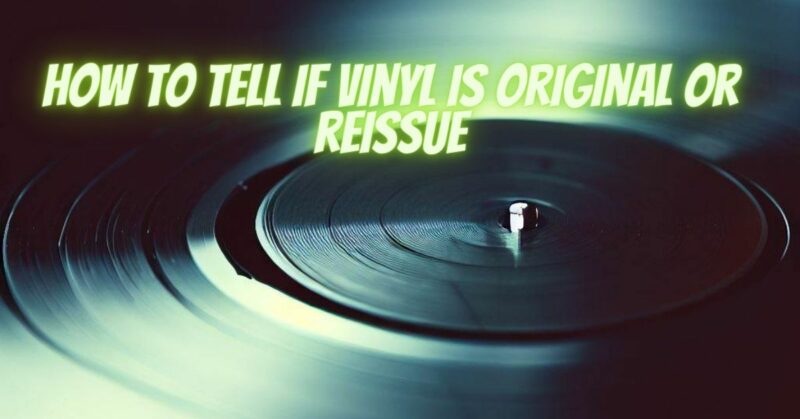Vinyl records have been around for over a century, and during that time, there have been many different pressings of the same album. Some of these pressings are original, while others are reissues.
Original pressings are the first copies of an album that were released. They are often more valuable than reissues, and they can also sound better. However, it can be difficult to tell if a vinyl record is original or reissue.
Here are some of the factors you can look for to help you determine if a vinyl record is original or reissue:
- The release date. Original pressings will have a release date that is earlier than reissues. However, it is important to note that not all reissues will have a different release date. Some reissues will be released with the same release date as the original pressing.
- The label. Original pressings will often have a different label than reissues. This is because the label that released the original pressing may no longer be in business, or they may have changed their name.
- The matrix number. The matrix number is a unique identifier that is etched into the vinyl record. Original pressings will have a different matrix number than reissues. The matrix number can be found on the label side of the record, near the center hole.
- The condition of the record. Original pressings are often in worse condition than reissues, as they have been played more often. However, this is not always the case. Some original pressings have been well-cared for and are in excellent condition.
- The rarity of the album. If an album is rare, it is more likely to be an original pressing. However, there are also rare reissues.
- The price of the record. Original pressings are often more expensive than reissues. However, there are also reissues that are more expensive than original pressings.
- The seller’s reputation. If you are buying the record from a reputable seller, they should be able to tell you if it is an original pressing or reissue.
There is no foolproof way to tell if a vinyl record is original or reissue. However, by looking for the factors listed above, you can increase your chances of identifying an original pressing.
If you are still unsure whether or not a vinyl record is original or reissue, you can always contact the record label or the artist’s management. They may be able to help you determine the pressing status of the record.
Additional Considerations
In addition to the factors mentioned above, there are a few other things to keep in mind when trying to determine if a vinyl record is original or reissue. These include:
- The barcode. Barcodes were not widely used on vinyl records until the 1980s. Therefore, if a record has a barcode, it is likely a reissue.
- The packaging. The packaging of an original pressing may be different from the packaging of a reissue. For example, the original pressing may have a different type of sleeve or a different color vinyl.
- The sound quality. Original pressings can often sound better than reissues. This is because the original pressings were often mastered using better equipment.
Ultimately, the decision of whether or not a vinyl record is original or reissue is up to you. However, if you are looking for a valuable or collectible record, it is important to be able to tell the difference.

